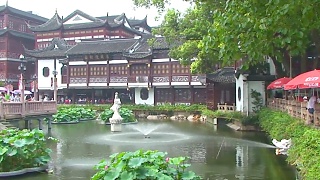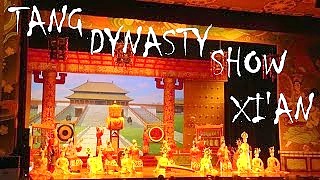Naturally colored glutinous rice.
[640],shadow=true,start=,stop=The Lantern Festival, also known as Yuanxiao Festival or Shangyuan Festival, is a traditional Chinese holiday celebrated on the fifteenth day of the first month in the lunar calendar, marking the end of the Chinese New Year celebrations. Here's some information about this colorful and joyous festival:
History and Origins:
Ancient Roots: The origins of the Lantern Festival can be traced back over 2,000 years to the Western Han Dynasty. It has evolved over time, incorporating elements from various cultural and religious traditions.
Taoist and Buddhist Influences: Initially, the festival had Taoist roots, with people making offerings to Taiyi, the god of heaven, to pray for good fortune and avert disasters. Later, during the Tang Dynasty, it also became associated with Buddhism, as monks would light lanterns to worship the Buddha.
Customs and Traditions:
Lantern Displays: The most iconic feature of the Lantern Festival is the elaborate lantern displays. These lanterns come in various shapes, sizes, and colors, often depicting animals, flowers, mythical creatures, and scenes from Chinese folklore.
Guessing Lantern Riddles: Another popular tradition is guessing lantern riddles (???, c?i d?ngm�). Riddles are written on strips of paper and attached to the lanterns. Visitors try to solve the riddles, adding an element of intellectual challenge and fun to the festivities.
Eating Yuanxiao: Yuanxiao (??), also known as tangyuan (??), are sweet glutinous rice dumplings stuffed with fillings like sesame paste, sweet bean paste, or peanuts. Eating yuanxiao symbolizes family unity and prosperity.
Dragon and Lion Dances: In some regions, dragon and lion dances are performed during the Lantern Festival, accompanied by drums, cymbals, and firecrackers. These lively performances are believed to bring good luck and ward off evil spirits.
Modern Celebrations:
Lantern Festivals: Throughout China and in Chinese communities worldwide, Lantern Festivals are held with grand lantern displays, cultural performances, and festive activities.
Tourist Attractions: Many tourist attractions host special Lantern Festival events, featuring intricate lantern installations, performances, and culinary delights.
Family Gatherings: Like other major Chinese festivals, the Lantern Festival is a time for families to come together, share meals, and enjoy each other's company.
Innovation and Modernization: While traditional customs are still observed, the Lantern Festival has also evolved with modern technology, incorporating LED lights, laser shows, and multimedia displays into the celebrations.
Overall, the Chinese Lantern Festival is a vibrant and symbolic celebration that brings communities together to welcome the new year with light, joy, and hope for the future.
Chinese cuisine is an intricate tapestry of flavors, techniques, and regional specialties that has evolved over thousands of years. From the fiery spices of Sichuan to the delicate dim sum of Cantonese cuisine, every region of China offers its own culinary delights. For visitors to China, exploring the diverse and dynamic world of Chinese food is an essential part of experiencing the country's rich cultural heritage. Here's a more extensive exploration of Chinese cuisine for visitors:
Regional Diversity:
Sichuan Cuisine: Hailing from the southwestern province of Sichuan, this cuisine is famed for its bold, spicy, and numbing flavors. Sichuan peppercorns, chili peppers, and aromatic spices are used liberally in dishes like Mapo Tofu, Dan Dan Noodles, and Sichuan Hot Pot, creating a symphony of flavors that tingles the taste buds.
Cantonese Cuisine: With its emphasis on fresh ingredients and delicate flavors, Cantonese cuisine is highly regarded for its seafood dishes, roasted meats, and dim sum. Steamed fish, Char Siu (barbecue pork), and Har Gow (shrimp dumplings) are just a few examples of the exquisite dishes that showcase Cantonese culinary mastery.
Shanghai Cuisine: Reflecting its coastal location and cosmopolitan history, Shanghai cuisine combines influences from Jiangsu, Zhejiang, and Anhui provinces. Sweet and Sour Mandarin Fish, Shanghai Soup Dumplings (Xiaolongbao), and Drunken Chicken are some of the signature dishes that highlight the diverse flavors and textures of this culinary tradition.
Beijing Cuisine: As the capital of China, Beijing boasts a rich culinary heritage deeply rooted in imperial traditions. Peking Duck, a dish with crispy skin and succulent meat served with pancakes and hoisin sauce, is a quintessential Beijing delicacy. Other notable dishes include Zhajiangmian (Beijing Noodles), Mongolian Hot Pot, and Beijing-style meat pies.
Hunan Cuisine: Known for its bold and aromatic flavors, Hunan cuisine features dishes that are spicy, sour, and intensely flavorful. Chairman Mao's Red-Braised Pork, Dong'an Chicken, and Steamed Fish Head with Chopped Chili exemplify the fiery and robust nature of Hunanese cooking, which makes ample use of chili peppers, garlic, and fermented ingredients.
Street Food and Snacks:
Jianbing: This savory Chinese crepe is a popular breakfast option, consisting of a thin pancake filled with eggs, scallions, cilantro, and various fillings such as crispy fried dough, pickled vegetables, or chili sauce.
Baozi: These steamed buns are filled with a variety of savory or sweet fillings, including pork, vegetables, or red bean paste. Baozi are a popular street food snack and can be found in teahouses, markets, and street stalls across China.
Roujiamo: Often referred to as Chinese Hamburgers, roujiamo features savory braised meat stuffed inside a flatbread, offering a hearty and flavorful snack that's perfect for on-the-go eating.
Dining Etiquette and Customs:
Family-Style Dining: Chinese meals are typically served family-style, with multiple dishes shared among diners seated around a table. It's customary to use chopsticks to pick up food from communal dishes and to serve elders before oneself.
Toasting and Ganbei: When dining with Chinese hosts, expect toasts (ganbei) with alcohol, usually baijiu (Chinese liquor). It's polite to reciprocate the toast and drink in moderation, but declining politely is acceptable if you don't drink alcohol.
Tea Culture: Tea is an integral part of Chinese dining culture, with a wide variety of teas available to complement different dishes. Green tea, oolong tea, and pu'er tea are among the most popular choices, and serving tea to guests is a sign of hospitality and respect.
Street Markets and Night Markets:
Wangfujing Snack Street, Beijing: Located near the Forbidden City, this bustling street market offers a wide variety of traditional snacks, street food, and local delicacies. Visitors can sample everything from scorpions on a stick to traditional Beijing snacks like Jianbing and Tanghulu (candied fruit skewers).
Shanghai Old Street, Shanghai: Nestled in the heart of the city's historic district, Shanghai Old Street is a bustling marketplace where visitors can explore narrow alleyways lined with traditional shops, street vendors, and food stalls. From steamed dumplings and stinky tofu to hand-pulled noodles and sugar-coated haws, there's something to satisfy every craving.
Dietary Considerations:
Vegetarian and Vegan Options: While Chinese cuisine traditionally features a wide range of meats and animal products, vegetarian and vegan options are becoming increasingly available, especially in larger cities and tourist destinations. Buddhist restaurants (????, s�sh� c?nt?ng) often offer meat-free versions of classic dishes, and plant-based ingredients like tofu, mushrooms, and seasonal vegetables are widely used in Chinese cooking.
Exploring the diverse and delicious world of Chinese cuisine is an essential part of any visit to China. From regional specialties and street food snacks to dining etiquette and cultural customs, the culinary landscape of China offers a rich tapestry of flavors, traditions, and experiences that are sure to delight and inspire visitors from around the world. Bon app�tit!.
 Soup dumplings for the Lantern Festival 元宵节
Soup dumplings for the Lantern Festival 元宵节





















